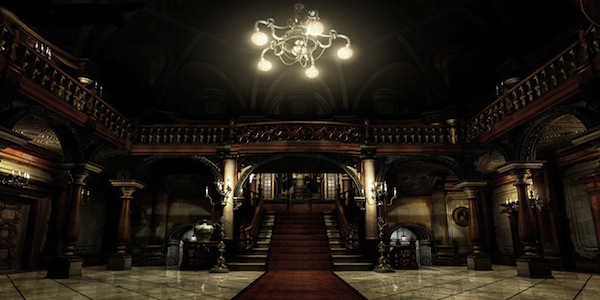Every gamer has their own concept of horror. Where one may jump at the sight of a ghastly image, another may scoff at the infantile attempts at fright. The most common horror element is the “jump scare”, but does it fall under the most accurate description of horror? At its core, horror extends far beyond the ability to scare somebody in a single instance; it’s about instilling a lasting fear that sticks with a person long after they’ve put down the controller for the evening. The gaming industry does its best at mimicking the truest form of horror in the Survival Horror genre, but even those can lack certain qualities that make the game unplayable even in broad daylight.
Atmosphere
A game’s atmosphere is what winds up setting the overall tone for the horror scenario in question. From spooky mansions to desolate spacecraft, the genre has found its success through the help of some otherwise trivial video game inclusions that are normally taken for granted. Music, lighting, and the games set pieces all bond together in a horror title to help bring to life the general unease that one should get out of the title. If Leon Kennedy had been traipsing through the uninviting European village to the soundtrack of Katamari Damacy, chances are the suspense brought on by the Las Plagas-infected enemies would have been nil.
The Unknown
How to kill a zombie is pretty much common knowledge at this point in time – one damaging blow to the head and the foe drops with little more than a groan. If recently released games like Lollipop Chainsaw are any indication as to what happens to a horror staple after its weaknesses are made public and the creature’s “fright factor” dissipates, than developers need to present gamers with new and unusual enemies to pose a whole new threat. Electronic Arts utilized the concept of introducing something new with creation of the vicious necromorphs. Killable mostly through calculated dismemberment, this alien creature was something fairly new to gamers – an enemy that couldn’t just be overpowered by frantic shots to the head and chest.
Suspense
A good horror game doesn’t rely on suspense, but it does turn to it every so often. Suspense in a video game can range anywhere from being forced to run away from a foe a la Silent Hills: Shattered Memories to having to fend off a slew of monsters as the protagonist awaits for an elevator to reach its destination. Anything that gets the player’s heart beat pumping can be considered suspense, and it acts as the perfect setup for the developer to pull at the gamer’s currently weekend nerves. Sometimes, developers take suspense a bit too far without realizing that it can have a rather limiting effect. For the best example of this, look to the mechanics of Shattered Memories. The only option is to run, and after awhile it gets a bit redundant.
Fear Exploitation
If not for this trait, the horror genre would be a mere shadow of what it is today. It is the common fears of man that spurs effective horror – that give it the substance to affect a person’s internal biological functions and receptors. Though research from the Royal College of Psychologists shows that only a mere one in ten people suffer from some form of fear, the concept of fear is a rather popular one that drives the lives of many. When that fear is translated into digital form, it gives the game the bulk of its weight. Some phobias may seem less likely to be persuasive in the digital world, but in the scenarios where someone who suffers from claustrophobia is controlling the protagonist through darkened, narrow hallways that seem to close in around them, fear exploitation is at its finest.
